Victoria\'s Secret Group Project PDF

| Title | Victoria\'s Secret Group Project |
|---|---|
| Author | JEZZ ‘KA |
| Course | Marketing Research |
| Institution | California State University Long Beach |
| Pages | 11 |
| File Size | 352.6 KB |
| File Type | |
| Total Downloads | 1 |
| Total Views | 138 |
Summary
Part 3 of Group Project...
Description
Marketing 470: Group Project Part 3 SURVEY QUESTIONS 1. Survey Link to Published Survey (Final Revision): Follow this link to the Victoria's Secret Survey: Take the Survey Link to Initial Document (First Draft of Survey Questions): https://docs.google.com/document/d/1jIHWmWOUGatXiSAf7ZSxTRJrRl4Sxvpk0I90HOY8AlM/e dit?usp=sharing 2. Summary of Survey Data Selecting our participants: To open up the survey to participants, we issued our survey link with an invitation to partake in our questionnaire on multiple social media platforms, by email, and encouraged recipients to repost the link and pass the opportunity unto others who may participate. Next, we sought more diversity in our sample pool, so we posted the link to Reddit under the r/SampleSize (survey) category to engage additional perspectives. Here’s how and why we chose to distribute the survey in these ways: We first distributed our survey link to personally known, eligible participants; familiar associations of friends and family. The invite was issued by email, and we had produced only a few qualified leads. We followed this effort by employing limited posting of the survey URL to select social media accounts, at our individual discretion. In addition, we made the survey visible and available on the Qualtrics platform, accessible by the public very early on. To further the survey’s effectiveness, we asked everyone to pass the link onwards to people outside of our team’s direct associations, hoping to garner a larger scope of customer responses. We believe that with this step, we were able to elicit a larger number of qualified participants, and from different areas and more diverse backgrounds than we ever could have achieved on our own. Once participants started the survey, they were greeted with a few key questions that served as qualifiers so that we received responses only from our targeted consumer base for this part of the study. That demographic included women, ages 18-35, who were not CSULB students currently enrolled in a Marketing Research class. Anyone taking the survey that met these necessary criteria was eligible to continue. We had substantial response numbers, but again, wanted to ensure that there was explicit variety amongst our survey’s participant’s geographical locations. What might the East Coast Millennial be experiencing with the VS brand? This hadn’t been directly clarified, so we posted the survey link to Reddit, a widely used social media platform, under the applicable survey category to ensure we had obtained diverse opinions from a variety of perspectives, and locations. This final distribution action allowed us to solicit the voices of a wide range of consumers, spread across the United States. About our survey: The period of collection for survey responses began October 28th and remained open through November 22nd. We chose to share our survey link on social media, through email, and by spreading it outside of our immediate reach by asking others to send it onward to qualifying parties they could reach out to. We believe this survey may have reached and been viewed by around 400 people, and with 65
participants, we feel this was a reasonable percentage of recipients to have successfully followed through with taking our survey. This calculates out to a 16.25% response rate in survey participation, out of the total number of recipients exposed to the invitation. The final ratio of unqualified participants to begin the survey was 10:65. Ten people attempted to take the survey but were deemed ineligible,m as their responses placed them outside of our qualified participant demographic. The reasons for disqualification included being male (8 of the 10), not being between the ages of 18-35 (2 of the 10), and for carrying no awareness of Victoria’s Secret as a brand (no one was disqualified due to this question). These factors disqualified ten entrants, and dismissed them from the study by being redirected to the end of the survey using skip logic. They were unable to answer any further questions on the subject. The demographic data we recorded for our participants is as follows: Mean, Median, Standard deviation, Variance, Range
Marital Status
Marital Status
Married
23
Mean
12.69
Widowed
1
Median
1
Divorced
1
Mode
1
Separated
1
STDV
1.90
Never Married
17
Variance
3.59
Total
43
Range
1
Ethnicity
Ethnicity
White
32
Mean
11.95
Black or African American
1
Median
1.5
American Indian or Alaskan 0 Native
Mode
0
Asian
2
STDV
12.52198067
Native Hawaiian or Pacific Islander
0
Variance
156.8
Other
7
Range
0
Total
42
Income
Income
>10,000
3
Mean
3.583333333
10,000-19,999
2
Median
3
20,000 - 29,999
3
Mode
3
30,000 - 39,999
6
STDV
2.108783938
40,000 - 49,999
4
Variance
4.446969697
50,000 - 59,999
3
60,000 - 69,999
1
70,000 - 79,999
3
80,000 - 89,999
5
90,000 - 99,999
0
100,000 - 149,999
7
more than 150,000
6
Total
43
State
Range
0
State
Alaska
1
Mean
1.166
Arizona
1
Median
1
California
2
Mode
1
Arkansas
1
STDV
3.57878364
Massachusetts
1
Variance
12.8076923
New Jersey
1
Range
1
New York
1
North Carolina
1
Oregon
2
Virgina
1
Kentucky
1
Washington
1
Total
14
3. Answers to our Revised Research Questions: RRQ 1: How do customers and non-customers perceive Victoria’s Secret products compared to competitors? In response to the final survey data, we realized that consumers are divided about Victoria’s Secret and the value that customers attribute to their products. Consumers do not all perceive Victoria’s as a luxury brand, but half of the respondents do moderately agree to the classification, associating Victoria’s with a luxury status. When participants were asked if Victoria’s Secret’s products met their needs better than other retailers, less than 50% agreed that Victoria’s Secret met their needs better than other stores, and only 13% strongly agreed with that statement. Victoria’s is not perceived as a top undergarment retailer for many of our survey takers, but those who favor VS often outweighed those who remain dissatisfied with the brand and products. Unwavering responders indicated that Victoria’s Secret products come across as a poor fit, uncomfortable, and constructed of poor quality materials. When looking at our data set of 47 responses to this question, 50% agreed, 10% were neutral, and 40% disagreed that Victoria’s Secret is a high-end lingerie brand compared to its competitors. However, when asked if they prefer Victoria’s Secret’s undergarments, approximately 35% prefer VS over competitors, 20% don’t favor one or the other, and 45% favor other competitors. Victoria’s was, however, perceived to be a leader in the production of the following elements: 1. Products create a sense of sexiness for the customer 2. Trendiness, keeping with current styles 3. Undergarment comfort 4. Enhancing products 5. Having good size availability Prices are viewed as “somewhat reasonable” by the strong majority of participants, which is a major asset benefiting the competitor, as demonstrated under RRQ3. Our results also indicate that product
quality is perceived to be lacking with Victoria’s Secret, and is another major asset amongst competitors when the retailers are compared. RRQ 2: Would changing our brand image and models to be more inclusive of all body types and ethnicities improve customer satisfaction with our brand or impact sales? From our data, we can conclude that adjusting the brand image to be more inclusive of various body types and ethnicities would be a smart move. 62% of customers familiar with the Victoria’s Secret brand agree that they would be more satisfied with the brand if models and store employees were ensured to be more inclusive in sizing and race. Overall, customers who shop at Victoria’s Secret do not agree with the current brand image of representing women’s body type, by 76%. Our study concludes that 72% of Victoria's Secret consumers would like to see a change in terms of female body representation in advertising. By including a variety of different female body types, Victoria’s Secret would be able to cater to the needs of the general consumer, while making a pleasant impact on society. RRQ 3: What do consumers value in our competitors' products, such as Parade, TropicofC, Youswim, Fredericks, and Aerie, and why. We were able to target what consumers thought and valued in Victoria’s Secret, as well as their competitors. Amongst our pool of survey participants, the top competitors were concluded to be: Nordstroms, Fredericks of Hollywood, Aerie by Aeropostale, and Adore Me. The resulting survey data has led us to this list of what consumers value most in the competitors’ products: 1. Good material quality 2. Available in appealing style and color varieties 3. Certain product design elements (such as back/front clasps or strap thickness, etc.) 4. Undergarments don’t show through clothes 5. Affordable prices 6. Products create a sense of sexiness for the customer 7. Retailer accommodates consumer sizing needs that fall above/below the typical size range 8. Brand messaging in advertisements makes them feel good about their body Consumers showed us that they moderately valued the following attributes: 9. Decorative embellishments on garments (lace trim, jewels, etc.) RRQ 4: Has there been a shift in consumer shopping habits (such as spending patterns, consumer preferences & the importance of corporate values), especially since the pandemic? According to our survey results to our questions on spending patterns, it does appear that consumer spending has changed during the pandemic. More shopping in person and browsing online is being done, but yet further responses indicate that overall, less spending is being done, and most of these extra shopping trips and browsing sessions do not lead to a purchase being made. RRQ 5: How do consumers decide where to shop & what aspects are seen as most important when selecting an undergarment retailer? The survey data has led us to some clear conclusions about what consumers look for in a
retailer and in a product when selecting where to shop for undergarments. Upon analysis, we can now deduct that consumers make the choice about which undergarment retailer to shop from based upon the desirable traits of the products they carry, and not so much upon the traits of the retailer itself. These are the identified top factors of importance when selecting where to shop: 6. Product comfort 7. Overall price 8. Overall product quality 9. Size availability 10. Corporate philanthropy 11. Corporate responsibility The following factors were identified as moderately important variables when selecting an undergarment merchant: 12. Message conveyed by the retailer’s advertisements 13. Contemporary styles 14. Familiarity with the brand/ store 15. Sales and coupons These final aspects were shown to be of no significant importance to participants: 16. Corporate values 17. Influencer’s ratings 18. Reputation (word of mouth) 19. Online reviews
4. Managerial Recommendation: Our managerial recommendation is that Victoria’s Secret needs to revamp its overall brand image to increase customer satisfaction with the brand. VS can’t reign as a luxury giant with so many people upset with their advertisement strategy and the message it sends to consumers. Winning back favoritism from the public should be a top priority when creating the new brand image. In conjunction with changing their image, we urge Victoria’s Secret to assess their product lines for improvements as to better meet the needs of their customers and draw more consumers to the brand. This recommendation relies on the consumer insight gained from our conducted focus group study in tandem with our survey results after final analysis. For a successful transition of the brand image, product revisions must occur at the same time. Things that stood out for improvement were inclusive size availability, overall comfortableness of undergarment products, and pricing that is better suited to the needs of customers. Furthermore, we recommend boosting the existing philanthropic activities of the corporation, and efforts to give back to the community should be scaled up and events well-publicized because these aspects were determined to be very important to customers. We additionally feel these would be a strong complement to a new, more inclusive brand image: As the brand image is revised, the products are revised, and the degree to which the company gives back to local communities and society overall is revised, and these together will build out a stronger foundation on which the brand can grow with consumers supporting the company, inspired by the message, and returning to the retailer due to this repositioning. As discovered in our focus group study, VS must revamp the products, and not just the
brand messaging. To revive customer confidence in the Victoria’s Secret’s brand, our focus group and survey takers indicated that replacing the wording, the ambiance, and the messaging is not enough to restore their patronage. Customers demand that the products be revised as well as the introduction of an inclusive brand image. We did not foresee this combination of customer needs, and would love to explore it further with a follow-up focus group or a brand-new group. The brand needs to decipher what it is going to take to regain some of their lost customer base and recruit new loyalty driven customers in order to return to the top-selling, luxury positioning they once held.
5. Discussion of what we learned from our research analysis of the survey data: We learned that our perception of the brand is not going to be reflected by consumers at all times, and that the messaging and needs we expect them to share and prioritize are often very dissimilar from our own ideals and assumptions. Without raw data from a variety of sources, no assumptions should be made without being backed by solid research and credible studies.
Appendix Are you a female in the age range of 18-35 years old?
Screening Q
Are you a CSULB student currently enrolled in Marketing Research (MKTG470)?
Screening Q
How familiar are you with Victoria’s Secret?
Screening Q
On average, how often do you shop for undergarments?
Engagement Q
How many of your typical undergarment shopping trips include visits to Victoria's Secret?
Engagement Q
Have you shopped at Victoria's Secret within the past 5 years (approximately)?
Engagement Q
How do you view Victoria’s Secret products? Pick all that are relevant.
RRQ1
Do you consider Victoria's Secret to be a high-end lingerie brand in comparison to its competitors?
RRQ1
Do you prefer Victoria’s Secret's undergarments more or less than our competitors' products?
RRQ1
Consider this statement: In terms of undergarments, Victoria's Secret meets my needs better than other retailers.
RRQ1
When planning on shopping for undergarments, what factors play a role in choosing where to shop? What retail brands do you consider Victoria's Secret's competitors?
RRQ3
Rate the importance of the following when choosing where you'd next like to purchase undergarments.
RRQ5
Do you feel Victoria's Secret's products are available at reasonable prices compared to other retailers?
RRQ5
How effective are our store sales and coupons at inspiring you to shop with us?
RRQ5
Have you ever tried shopping for undergarments from any of the following retailers?
RRQ3
From which of those retailers have you ever made a purchase?
RRQ3
What do you value as important in the competitors' undergarment products?
RRQ3
How important are the corporate values of a retailer (beliefs, philosophies, principles) when deciding where to shop for undergarments?
RRQ4
How important is the corporate responsibility of a retailer (social, economic, and environmental accountability) when deciding where to shop for undergarments?
RRQ4
How important is the corporate philanthropy of a retailer (community involvement, support of beneficial causes) when deciding where to shop for undergarments?
RRQ4
On average, how often have you simply browsed online for undergarments since the COVID-19 pandemic?
RRQ4
Out of those browsing sessions since the pandemic, how often have you made a purchase?
RRQ4
Have you ever belonged to any monthly delivery subscription services for clothing, undergarments, or makeup?
RRQ4
Did you acquire that subscription during the COVID-19 pandemic (activated subscription to that service between January 2020 and now)?
RRQ4
Which of the following best describes how your spending habits may have changed since the onset of the COVID-19 pandemic?
RRQ4
Being “body-positive & size-inclusive” means a retailer promotes various natural body types and sizes so that everyone of every shape feels welcome and included. Do you agree that Victoria’s Secret successfully sends out a “body-positive & size-inclusive” message?
RRQ2
Do you believe Victoria's Secret models are an accurate or inaccurate representation of the typical female body type?
RRQ2
Would the use of models and employees that have different body types and ethnicities improve your satisfaction with our brand?
RRQ2
Do you want to see Victoria’s Secret change their advertisements to be more supportive of various body types?
RRQ2
How satisfied are you with Victoria’s Secret’s products?
RRQ1
Overall, do you feel more satisfied with the Victoria’s Secret (VS) brand than with all other undergarment brands?
RRQ1
Please provide your ethnicity:
Demographic
What state do you currently reside in:
Demographic
Identify your marital status:
Demographic
Identify your per year income bracket:
Demographic...
Similar Free PDFs

Victoria\'s Secret Group Project
- 11 Pages
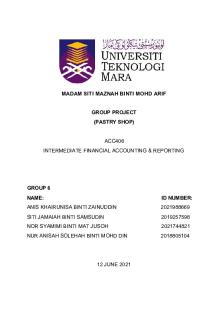
Group Project Account ( Group 6)
- 21 Pages
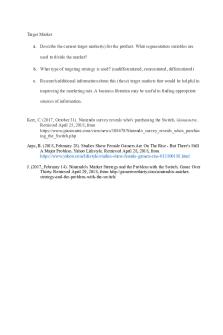
Group Project- Target Market
- 4 Pages
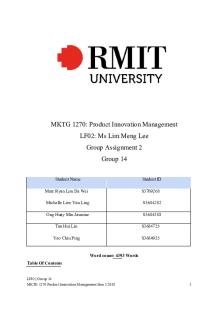
PIM Group Project 2
- 68 Pages
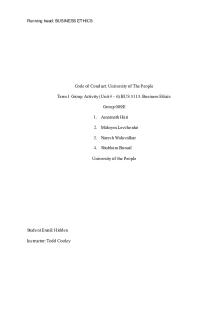
Group Project 009E Final
- 21 Pages
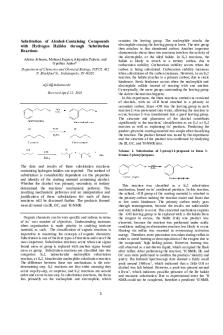
Group Project JOC Note
- 4 Pages

Group Project Proposal
- 1 Pages
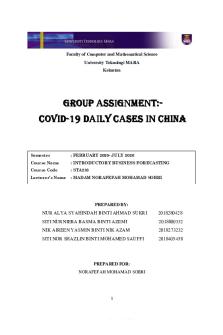
Group Project STA 233
- 33 Pages
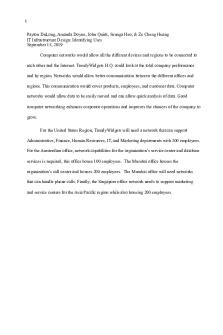
IST Group Project
- 19 Pages

Group project guidelines
- 1 Pages

group project sta108
- 55 Pages

CSR Group Project ASM401
- 18 Pages

MNT group Project
- 9 Pages

CSC264 Group Project
- 8 Pages

Project MAT575 Group 1
- 9 Pages

Group project-TB
- 31 Pages
Popular Institutions
- Tinajero National High School - Annex
- Politeknik Caltex Riau
- Yokohama City University
- SGT University
- University of Al-Qadisiyah
- Divine Word College of Vigan
- Techniek College Rotterdam
- Universidade de Santiago
- Universiti Teknologi MARA Cawangan Johor Kampus Pasir Gudang
- Poltekkes Kemenkes Yogyakarta
- Baguio City National High School
- Colegio san marcos
- preparatoria uno
- Centro de Bachillerato Tecnológico Industrial y de Servicios No. 107
- Dalian Maritime University
- Quang Trung Secondary School
- Colegio Tecnológico en Informática
- Corporación Regional de Educación Superior
- Grupo CEDVA
- Dar Al Uloom University
- Centro de Estudios Preuniversitarios de la Universidad Nacional de Ingeniería
- 上智大学
- Aakash International School, Nuna Majara
- San Felipe Neri Catholic School
- Kang Chiao International School - New Taipei City
- Misamis Occidental National High School
- Institución Educativa Escuela Normal Juan Ladrilleros
- Kolehiyo ng Pantukan
- Batanes State College
- Instituto Continental
- Sekolah Menengah Kejuruan Kesehatan Kaltara (Tarakan)
- Colegio de La Inmaculada Concepcion - Cebu